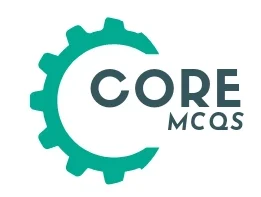Biology Chapter 8 Entry test MCQs
26. Darwin’s theory of evolution was mainly based on the evidences from———-.
a. Geographical distribution and comparative anatomy
b. Geographical distribution and fossil record
c. Paleontology and Geology
d. Fossil record and Embryology
27. Over many years two population could separate species that is applied upon: become dissimilar enough to be designated at
a. Black smith bicep
b. Galapagos finches
c. Giraffe neck
d. Giant turtle
28. Which is not a geographical barrier?
a. Mountains
b. Ocean
c. Atmosphere
d. Low land
29. According to the theory of natural selection, organisms produce:
a. Offspring according to the resources available
b. More offspring than supported
c. Offspring to create resources
d. Less offspring than supported
30. Which animals support Darwin’s view of inheritance of desirable variation?
a. Snake
b. Galapagos finches
c. Giraffe
d. All of these
31. ————-occurs because natural selection gives some alleles a better chance of survival than others.
a. Evolution
b. Fitness
c. Artificial selection
d. Crossing over
Neo-Darwinism
32. Neo-Darwinism has integrated discoveries and ideas from all except:
a. Darwinism + Haeckelism
b. Darwinism+ Lamarckism
c. Lamarckism+ Mendelism
d. Darwinism + Mendelism
33. Neo-Darwinism is:
a. Paleontology
b. Taxonomy
c. Serology
d. Genetics
34. The finchion of Galapagos Islands provide evidence in favor of:
a. Retrogressive evolution
b. Evolution due to mutation
c. Special creation
d. Evolution due to biogeography
35. Modern biological sciences suggest that———-are the ancestors of all life forms.
a. Protozoans
b. Protists
c. Parazoans
d. Prokaryotes
36. ————provides a visual records in a complex series showing the evolution of an organism.
a. Fossils record
b. Comparative anatomy
c. Electron microscopy
d. Comparative embryology
37. The presence of gilt slits, in the embryos of all vertebrates, supports the theory of:
a. Organic evolution
b. Metamorphosis
c. Biogenesis
d. Recapitulation
38. Which is not a character of fossils?
a. Traces of ancient organisms
b. Actual remains of ancient organisms
c. May be embedded in sand, resin or ice
d. Living
39. Functionally different but structurally alike organs are:
a. Anomalous
b. Analogous
c. Cosmopolitan
d. Homologous
40. Analogous organs help organism to live in:
a. Different habitats
b. Same habitat
c. Environment
d. Different biomes
41. Which one of the following statement could not be used to describe a species:
a. A group capable of producing viable off springs
b. A group with similar autosomes
c. A group sharing same niche
d. A group with analogous structures
42. When two species of different genealogy come to resemble each other as a result of adaptation, the phenomenon is termed?
a. Co-evolution
b. Microevolution
c. Divergent evolution
d. Convergent evolution
43. The actual remains or traces of organisms that lived in ancient geological times:
a. Fossils
b. Vestigial remains
c. Analogous organs
d. Fuel
44. In humans gill pouches have modified into:
a. Ear
b. Nose
c. External ear
d. Eustachian tubes
45. Vestiges of vestigial organs are those organs which have ceased to be of any use in their possessor but they persist to reduce from generation after generation. In man they are:
a. Nictitating
b. Vermiform appendix
c. Ear muscles
d. Соссуx e. All of these
46. The organs which are similar in function but different in structure, are called:
a. Homologous organs
b. Analogous organs
c. Divergent evolution
d. Convergent evolution
47. Forelimbs of man, horses and whales show:
a. Chemical evolution
b. Analogous organs
c. Convergent evolution
d. Divergent evolution
48. “Evolution is a remodeling process”, this is supported by:
a. Comparative anatomy
b. Biogeography
c. Molecular biology
d. Comparative physiology
49. The comparative embryology of all vertebrates shows presence of:
a. Scales
b. Hairs
c. Fins
d. Gill pouches
50. Fossils are most likely to be present in:
a. Igneous rocks
b. Sedimentary rocks
c. Shower curtains
d. Metamorphic rocks
